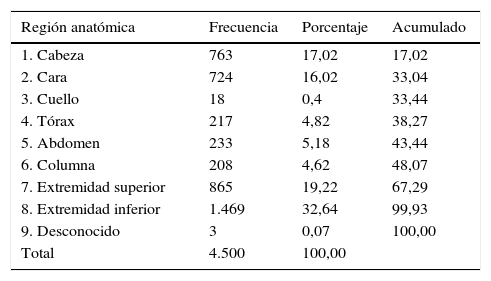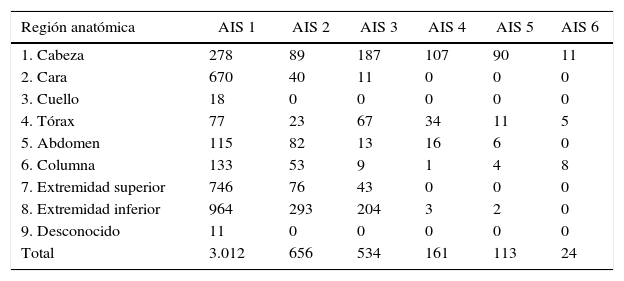Los atropellos son una de las principales causas de muerte entre los accidentes de tráfico. Recientemente, ha aumentado el estudio de los atropellos, principalmente debido a la aplicación de la normativa europea y japonesa en protección de peatones. Esta investigación presenta un análisis del traumatismo cráneo-encefálico del peatón atropellado, asociándolo con la estructura del vehículo responsable de la lesión, su mecanismo de daño y comparando el resultado con la normativa existente.
MétodosLa metodología empleada ha consistido en un estudio epidemiológico descriptivo y transversal, mediante el estudio de datos de peatones atropellados recogidos en la base de datos americana (PCDS) que analiza a un total de 552 peatones atropellados y un total de 4.500 lesiones documentadas.
ResultadosDe acuerdo con este estudio, el capó es el causante del 15,1% de las lesiones de la cabeza del peatón, mientras que el parabrisas es responsable de 41,8% de todas las lesiones. En el caso de los vehículos tipo utilitario la ubicación del impacto de la cabeza se produce por encima de lo que se espera en la regulación actual y, por lo tanto, no se aplican las contramedidas necesarias. De todas las lesiones en la cabeza sufridas por los peatones solo el 20% tiene la aceleración lineal como mecanismo de lesión, el 40% de las lesiones se deben a la aceleración rotacional.
ConclusionesEn esta investigación se pone de manifiesto la importancia de la aceleración rotacional como mecanismo de daño en la cabeza del peatón atropellado. En la normativa actual solo la aceleración lineal está contemplada en la formulación del principal criterio biomecánico utilizado para predecir el traumatismo cráneo-encefálico.
Pedestrian-vehicle collisions are a leading cause of death among motor vehicle accidents. Recently, pedestrian injury research has been increased, mostly due to the implementation of European and Japanese regulations. This research presents an analysis of the main head injury vehicle sources and injury mechanisms observed in the field, posteriorly the data are compared with the current pedestrian regulations.
MethodsThe analysis has been performed through an epidemiologic transversal and descriptive study, using the Pedestrian Crash Data Study (PCDS) involving 552 pedestrians, sustaining a total of 4.500 documented injuries.
ResultsAccording to this research, the hood surface is responsible for only 15,1% of all the head injuries. On the other hand, the windshield glazing is responsible for 41,8%. In case of sedan vehicles the head impact location exceeds what is expected in the current regulation, and therefore no countermeasures are applied. From all the head injuries sustained by the pedestrians just 20% have the linear acceleration as isolated injury mechanism, 40% of the injuries are due to rotational acceleration.
ConclusionsIn this research, the importance of the rotational acceleration as injury mechanism, in case of pedestrian-vehicle collision is highlighted. In the current pedestrian regulation just the linear acceleration is addressed in the main injury criteria used for head injury prediction.
Artículo

Si es la primera vez que accede a la web puede obtener sus claves de acceso poniéndose en contacto con Elsevier España en suscripciones@elsevier.com o a través de su teléfono de Atención al Cliente 902 88 87 40 si llama desde territorio español o del +34 932 418 800 (de 9 a 18h., GMT + 1) si lo hace desde el extranjero.
Si ya tiene sus datos de acceso, clique aquí.
Si olvidó su clave de acceso puede recuperarla clicando aquí y seleccionando la opción "He olvidado mi contraseña".













